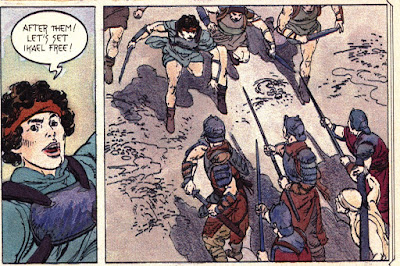by Jim Starlin
Marvel Comics, 2016
I remember reading Jim Starlin's issues of Captain Marvel in 1973 and 1974. Although Starlin's run on the title was in actuality rather short, his skills in writing and art made Captain Marvel stand out from the other books in the Marvel lineup.
Much of my admiration for Starlin's work revolved around the high quality of his art. It wasn't unusual for other Marvel artists of that era, like Dean Colan, to meet their page count by taking shortcuts, but Starlin lavished care and attention on all of his efforts. This single page must have taken him several days to draw:
So it was nice to see Marvel package all of Starlin's Captain Marvel-related work in this 352-page 'Complete Collection' trade paperback. Along with comics from 1973 and 1974, it also contains the 1982 Marvel Graphic Novel The Death of Captain Marvel.
It's interesting to read these stories from the 70s and see the advent of Thanos from Iron Man No. 55 (February 1973):
As well, Starlin's introduction of the 'cosmic' aspects of Captain Marvel still has that aura that testifies to the influence of the underground comix scene:
I'm not sure how comic book fans under the age of 40 will react to this material; in some ways, the plots certainly are more approachable than much of what is featured in the current Marvel lineup. But readers familiarized with the Thanos storyline through the recent Avengers movies may find the Captain Marvel of the 70s too...........'trippy'....... to be all that endearing.
I'm guessing that Captain Marvel: The Complete Collection will appeal more to comic book fans over 50 than any other age group.
Unfortunately, if you want a 'new' quality copy of Captain Marvel: The Complete Collection you'll need to be prepared to pay at least $36 (plus shipping) at amazon.
Some speculators at amazon are offering the book for an obscene $461. My advice ? If you're a fan of Starlin and Captain Marvel, you might want to pick this up sooner, rather than later................














































































